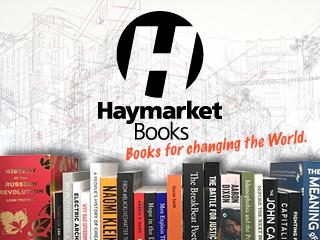Crashing their auction
reports on the struggle of locked-out art handlers to make the famous Sotheby's auction house agree to a fair contract for union workers.
IF ANY current battle in the war on workers is emblematic of the 1 percent versus the 99 percent, the lockout of 43 art handlers at Sotheby's auction house in Manhattan is it.
On the evenings of November 2 and November 9, more than 300 protesters chanted "Shame on you!" and "We are the 99 percent!" while some of the richest people in the world entered Sotheby's to participate in the two biggest auctions of the year, which included pieces of art that sold for tens of millions of dollars each.
With dozens of security guards and NYPD police officers on one side of the barricades and union members, students and activists on the other, the lines were clearly drawn. The ladies in their mink coats and the men wearing their black ties all rushed by the crowd, confused and frightened by the anger being expressed directly to their faces.
We, the 99 percent, had crashed their party.
The art handlers, represented by the Teamsters Local 814, have been locked out since August 1, when contract negotiations became another example of corporate blackmail.

Sotheby's made $680 million in profits in 2010, and subsequently gave CEO Bill Rupprecht a 125 percent pay raise--and demanded that union members surrender their benefits. Other demands included the right to hire unskilled "temporary" workers, cutting wages 10 percent by decreasing hours of work, eliminating health and retirement benefits and making employees waive their right to sue for discrimination.
"Throughout most of the process, negotiations have been intermittent and not very productive," Teamsters Local 814 organizer Julian Tysh explained. "Management has continued to insist that we accept their entire rewritten proposal."
The art handlers have survived on unemployment benefits and a weekly check from the Teamsters, and they have started an informal fund, from which they can withdraw during strikes and lockouts.
SIMILAR TO the struggles in Madison last winter and Verizon workers on the East Coast during the summer, the art handlers at Sotheby's have suffered the consequences of corporate greed. But they are fighting back.
For the past three months, the locked-out workers have continuously picketed outside of the Sotheby's headquarters on York Avenue on the Upper East Side of Manhattan and traveled across the Atlantic for a labor rally outside of Sotheby's in London. On November 2, Teamster members protested outside the New York and Philadelphia offices of the notorious anti-labor law firm Jackson Lewis, which has represented Sotheby's management during contract negotiations. Also, several wives of Local 814 members disrupted an annual dinner of the New York Women's Foundation (NYWF) on October 25 in order to confront NYWF chair Diana Taylor, who is a board member of Sotheby's.
At every one of these events, the workers and activists have emphasized that Sotheby's actions against working families and the corporation's interests represent the top 1 percent in direct opposition to the interests of the 99 percent.
Tysh said, "We are standing strong because we know that agreeing to management's proposal would be the beginning of the end for the union at Sotheby's--that it would destroy a good working-class job that members have fought to create and maintain over the years."
With the help and participation of other unions, local activists and Occupy Wall Street protesters, the art handlers' struggle has grown in strength and publicity.
Occupy Wall Street first became involved during an auction on September 22, when several activists stood up and aired the grievances of the art handlers. Another disruption occurred at Union Square Café, which is owned by Sotheby's board member and restaurateur Daniel Meyer. Direct actions have continued and have become effective in drawing media attention to the lockout and connecting it to the broader Occupy movement.
"The solidarity from [Occupy Wall Street] is showing the company that their type of greed will not only be rejected by their unionized employees," Tysh said, "but also by New Yorkers and Americans at large."
The local and national media have been eager to find and publicize examples of Occupy Wall Street branching out to other movements, especially those of labor. Following the involvement of activists from around the city and specifically Zuccotti Park, the lockout has been reported by the Nation, the Washington Post, and the New York Daily News. Furthermore, the high-profile status of the targets of the direct actions has increased media interest.
In addition to being a Sotheby's board member, Diana Taylor is also the former New York State Superintendent of Banks and the domestic partner of Mayor Michael Bloomberg. Other board members include Chairman Michael Sovern, the former president of Columbia University and a current professor at Columbia Law School--and James Murdoch, son of press baron Rupert Murdoch. Sotheby's is closely connected to Wall Street by people who hold positions throughout the financial establishment.
Sotheby's auction house, which deals exclusively with people rich enough to afford million-dollar portraits and sculptures (the 1 percent), has directly tried to lower the working and living conditions of its unionized workers (the 99 percent), who are also predominantly Black and Latino. As such, the lockout not only symbolizes the Occupy movement, but is an important part of it--a struggle, first and foremost, against economic inequality, involving the super-rich upper class versus the working class.
"Our fight at Sotheby's is the same fight at Liberty Square and the same as the fight of workers in Oakland and Greece," Tysh said. "Hopefully, this fighting spirit will continue to take hold."


